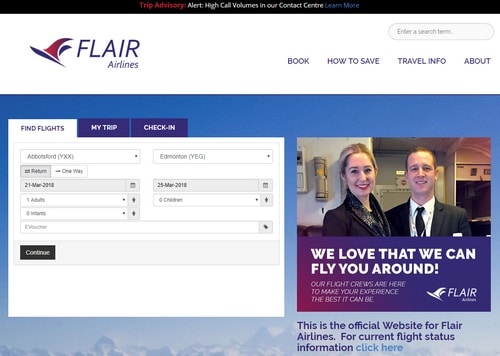Airline alleges that former contractors are holding its domain names hostage.

A small Canadian airline says that former contractors are holding its two main domain name hostage, causing the company to lose substantial sales. It’s yet another example of why a company must be the registered owner of its domain names rather than letting a third party be the registrant.
In a lawsuit (pdf) filed in Illinois yesterday, Flair Airlines Ltd claims that former customer service and website services contractors were supposed to register FlairAirlines.com and FlairAirlines.ca in the airline’s name.
When the relationship soured and was terminated, the airline found out that the domains were not in its control. The airline could not get control of the domains or make changes to them at GoDaddy because it wasn’t the official registrant.
In its suit, the airline says that it was forced to switch its domain name to FlairAir.ca. On the day of the switch the company’s sales went from $64k to $29k, it says. It had to spend money for Google Adwords to direct customers to the “correct” website.
Regardless of who is at fault for the termination of the business relationship, this is just another example of why a company must be the registrant of its domain names. It should also have the master registrar controls for the domain name.






I don’t think that Flair Air learned their lesson. They don’t even have flairair.ca registered in the airline’s name. And they don’t even own flair.ca. Before selecting a corporate name or a brand name, always register the .com and local country ccTLD in the founder’s name and then transfer it to your corporate hold co, or operating co, if your business is a public company.
I am going to pay $13,000,000 for porn . com and push it into my let my ex brother in law’s godaddy account for safe keeping. yes that will be fine.
Hopefully they will prevail in their suit. It sounds to me that its obvious what the intent of the initial registration of the domain name was meant for , and to whose benefit it was to be used. It shouldn’t be this difficult for the many businesses that unfortunately encounter this sort of issue due to just not understanding the ins and outs and intricate details of their web address.
Practically speaking, to avoid problems, it’s not enough for the company to be the registrant. Beyond that, they need
– Access to the registrant email address.
– Access to the registrar account where the domain is managed.
Both forms of access must be secure and ongoing. If the registrant address might leave with an ex-employee or vanish with an expired domain, then it may as well not be someone else’s from the beginning.
And if either form of access is shared with a disgruntled contractor, then they can simply change the DNS records, transfer the domain, and set themselves up as the registrant.
It might be possible to fix such damage. But why incur such risk?